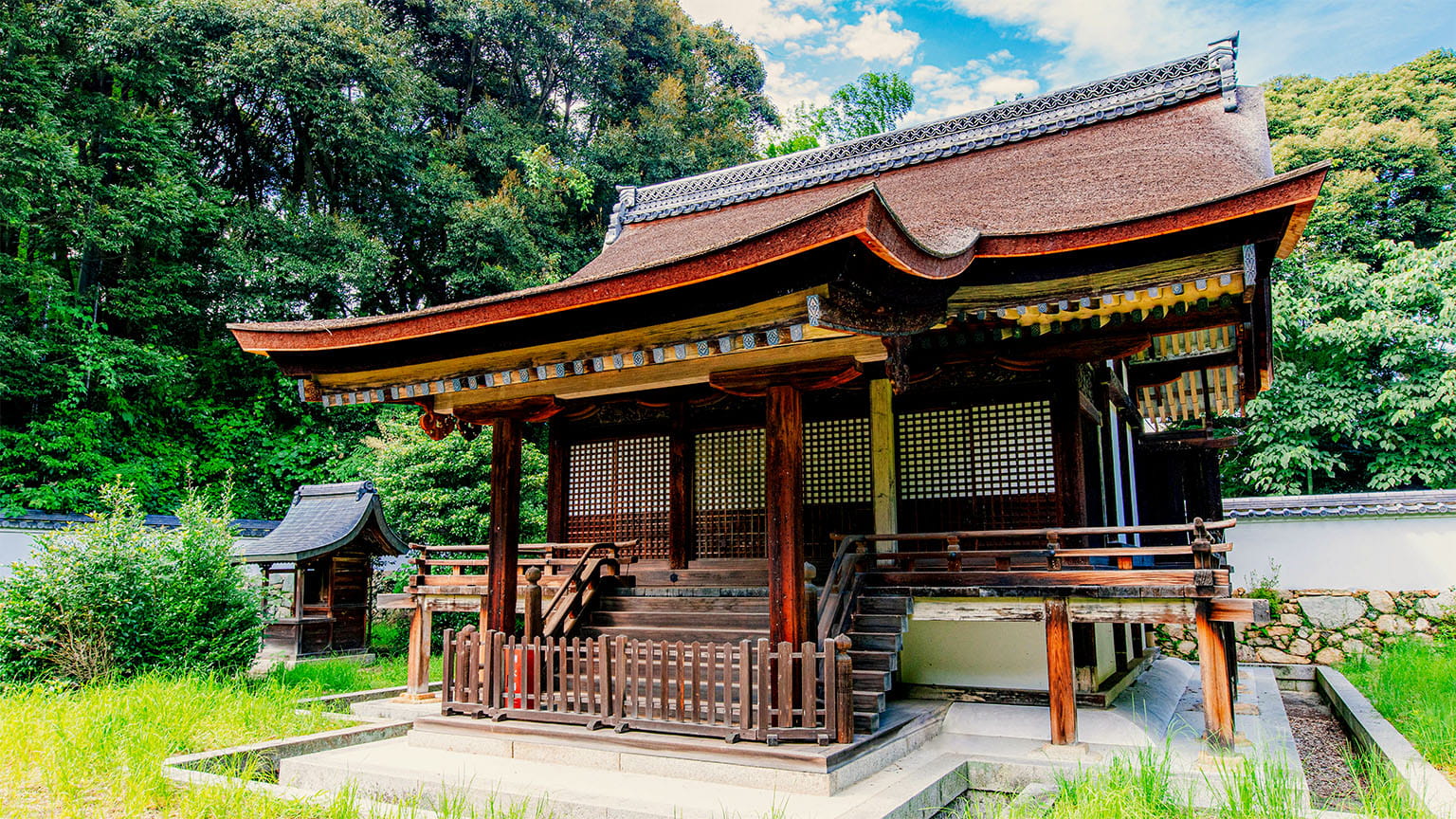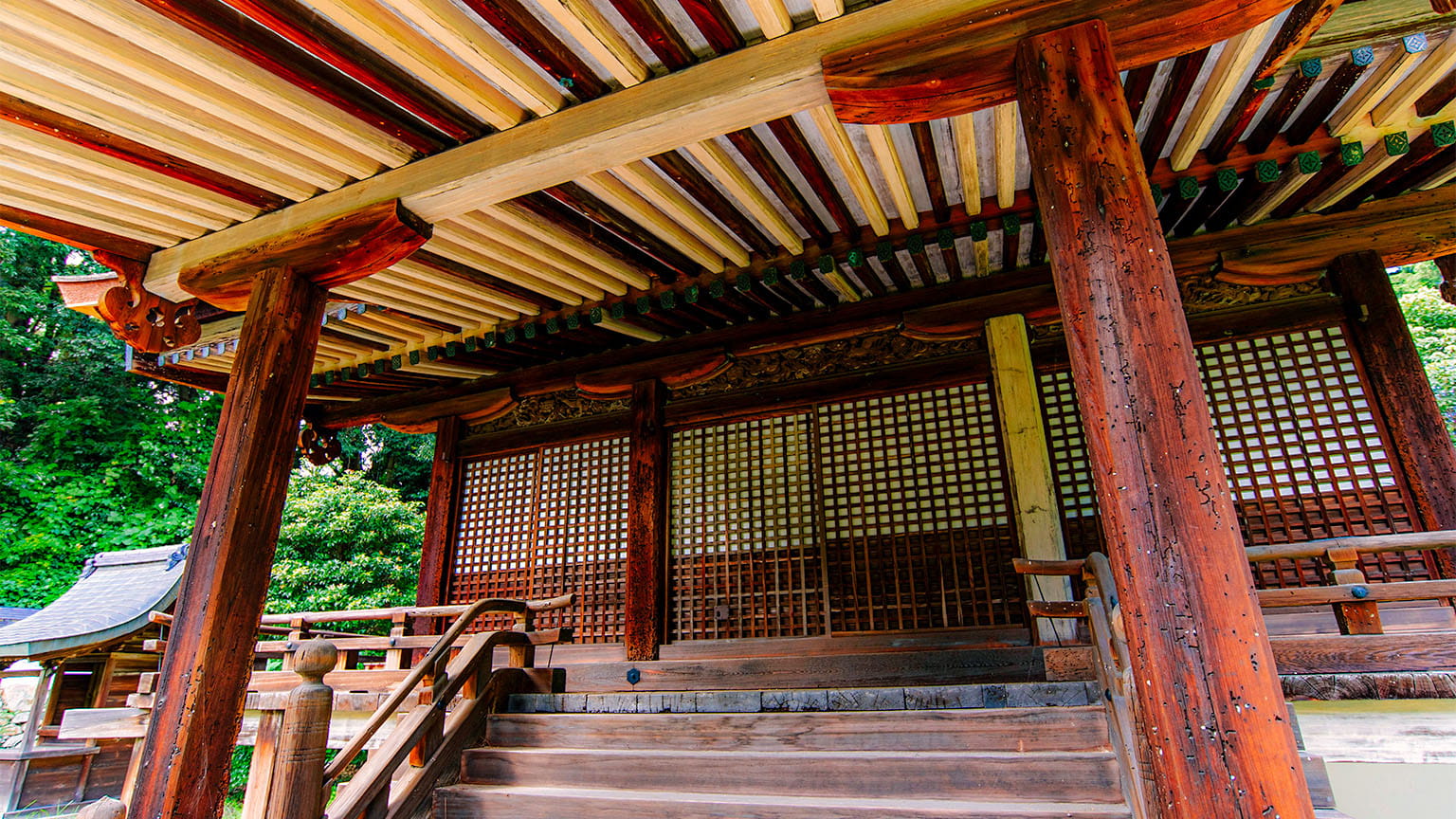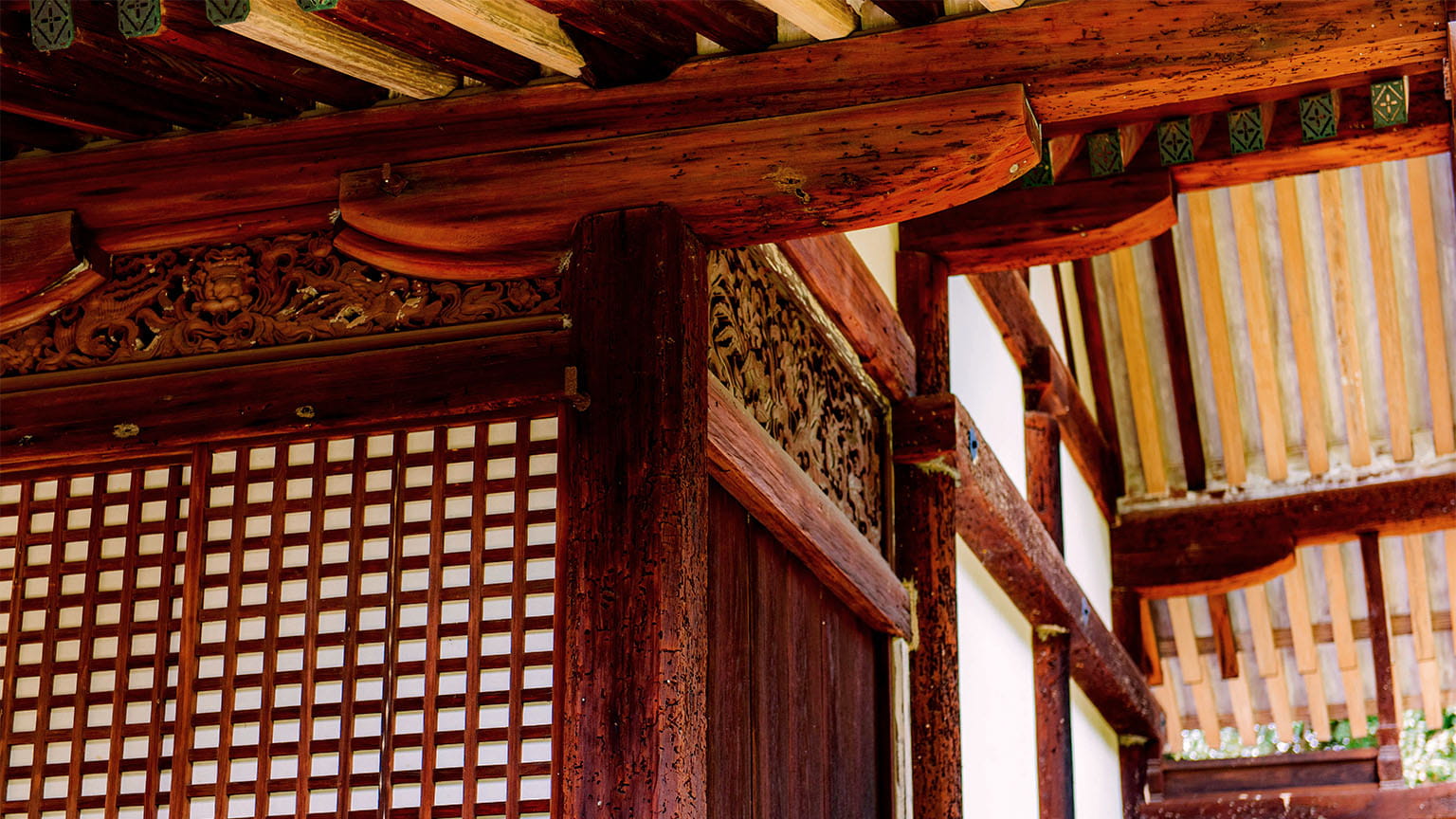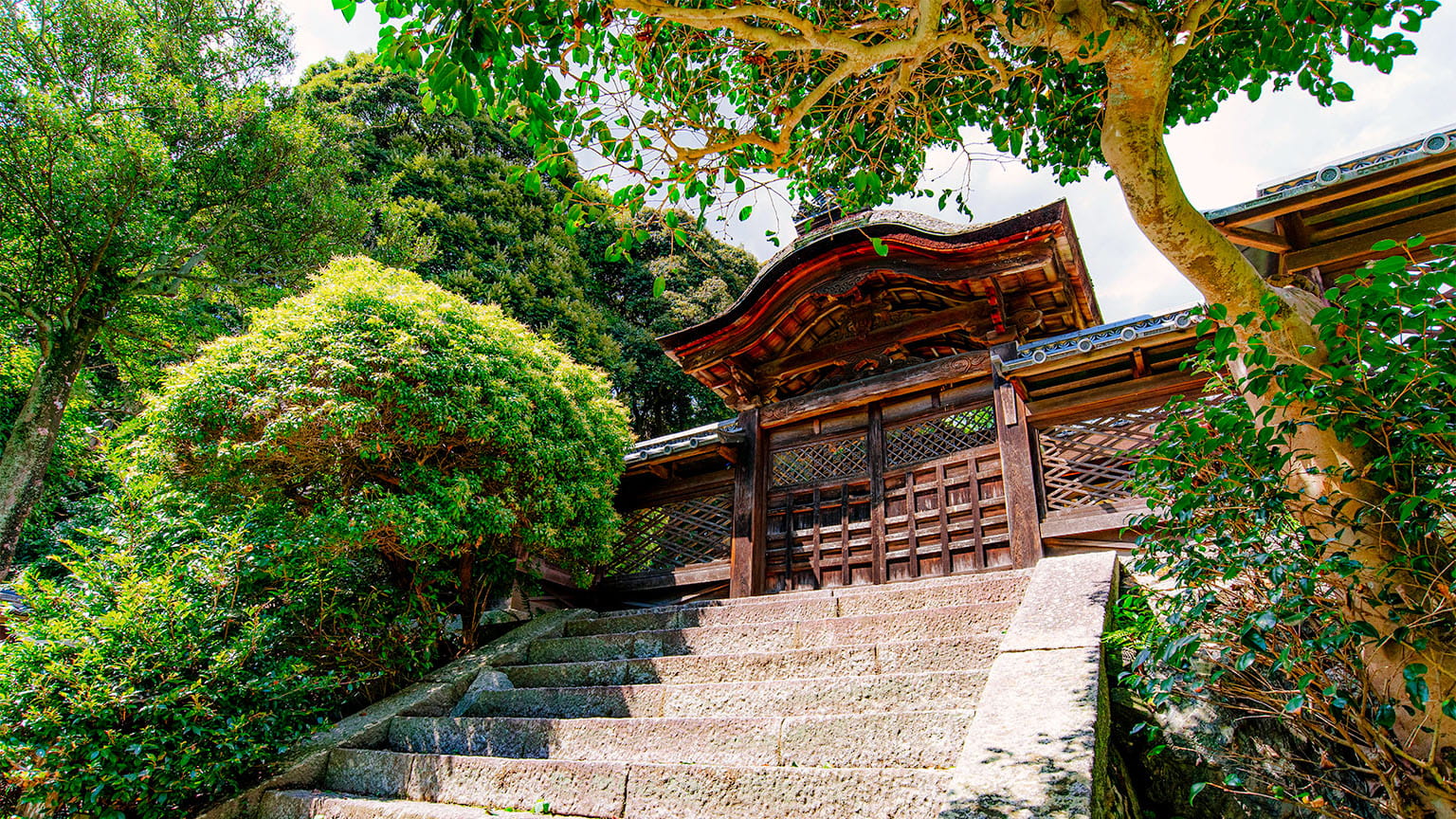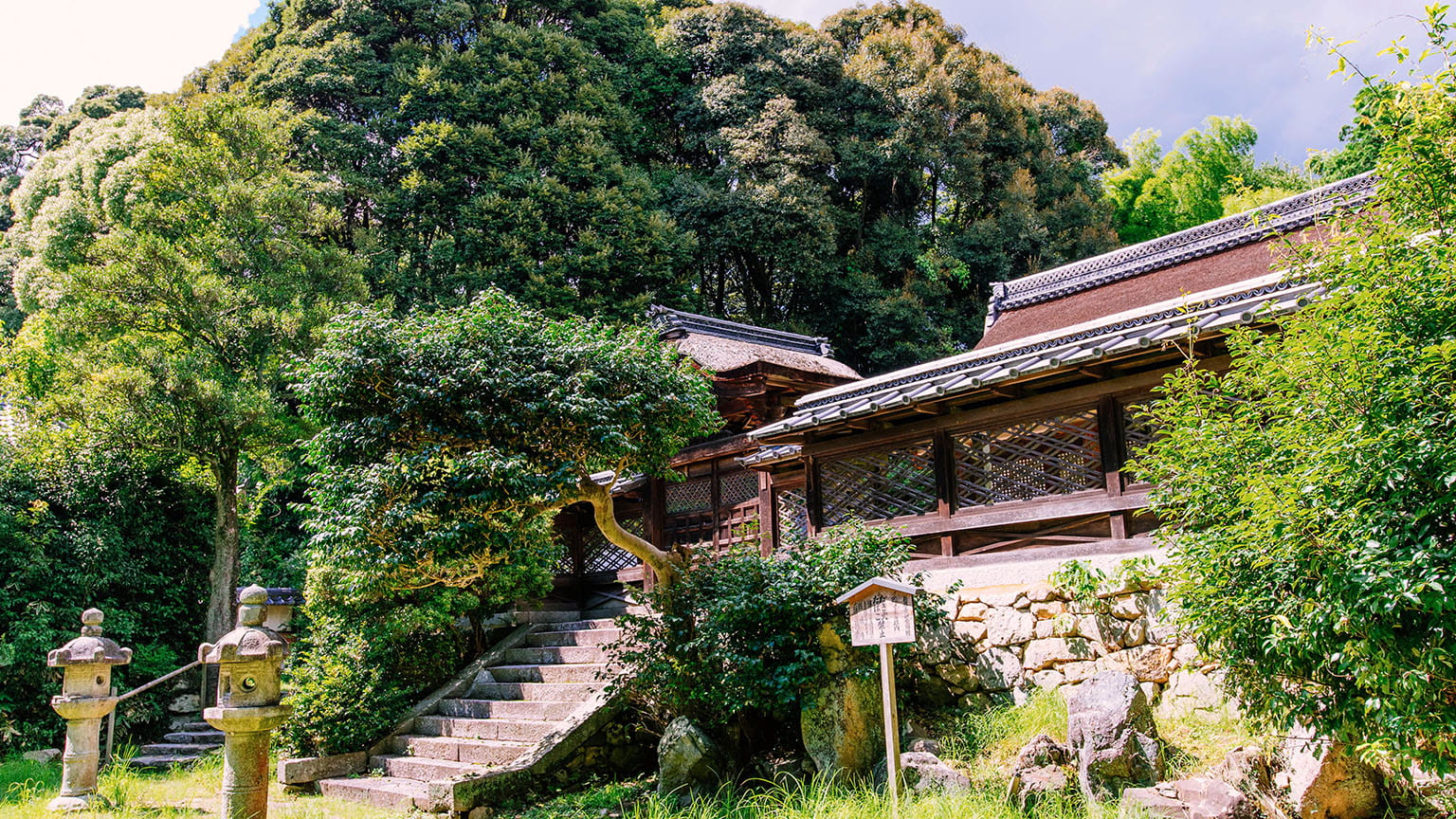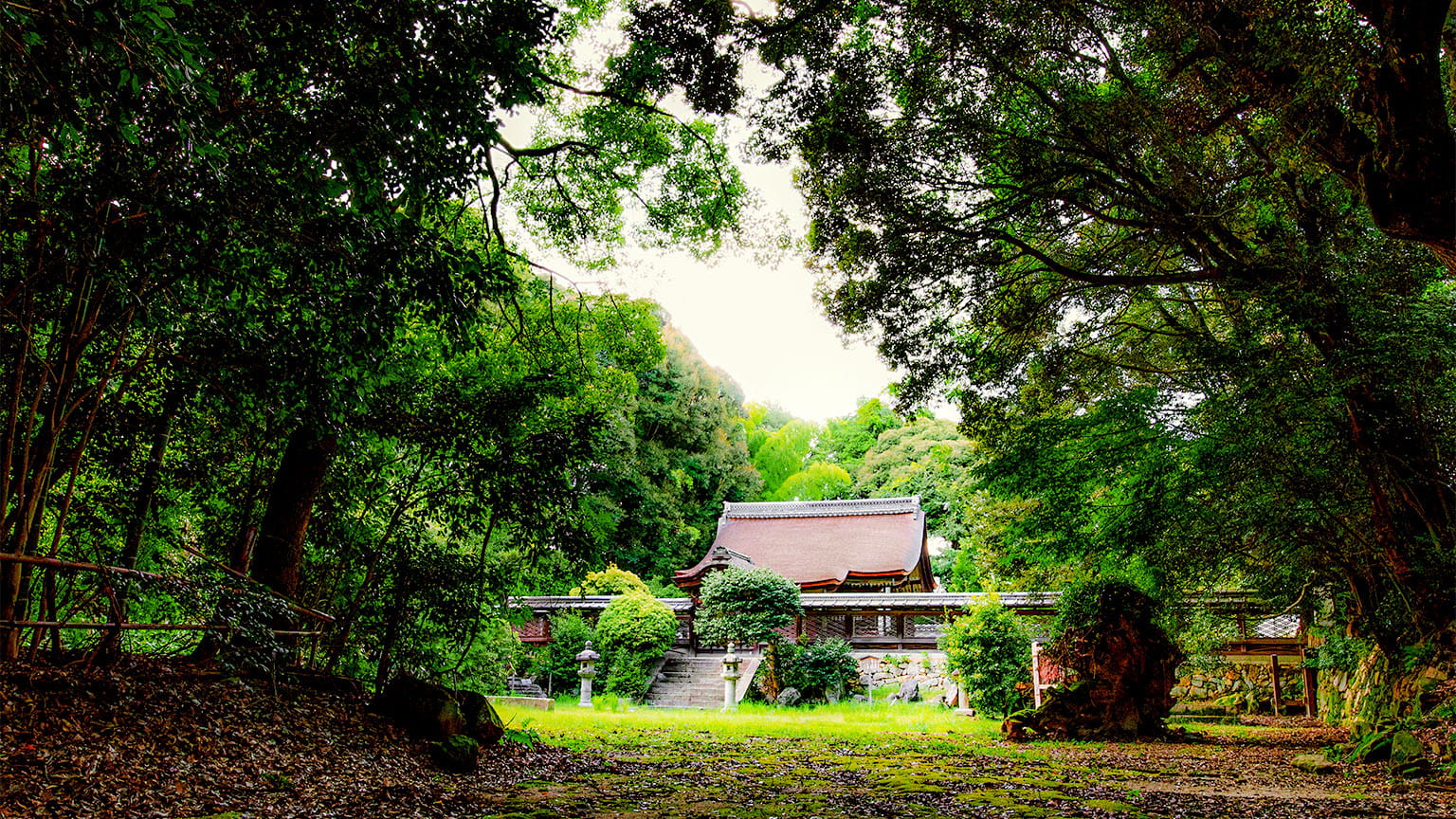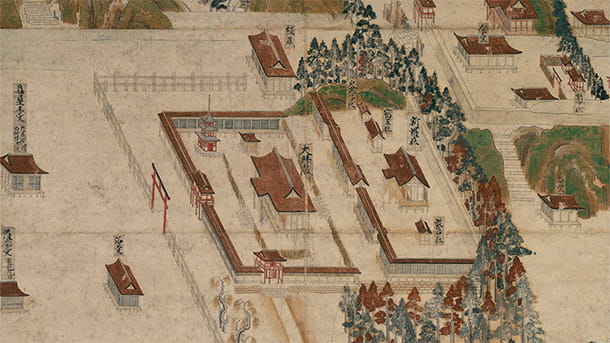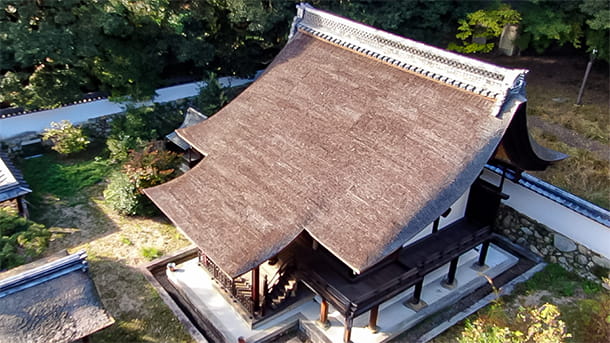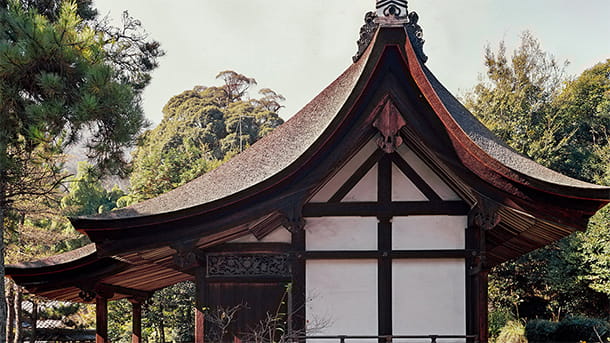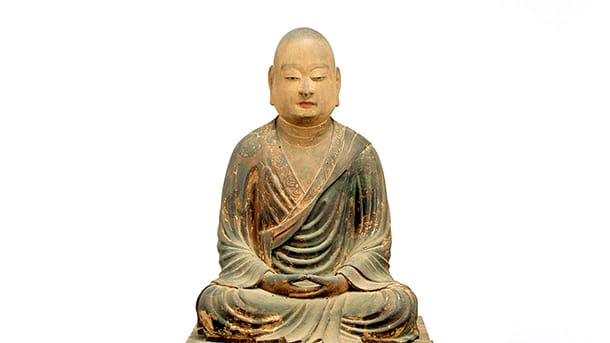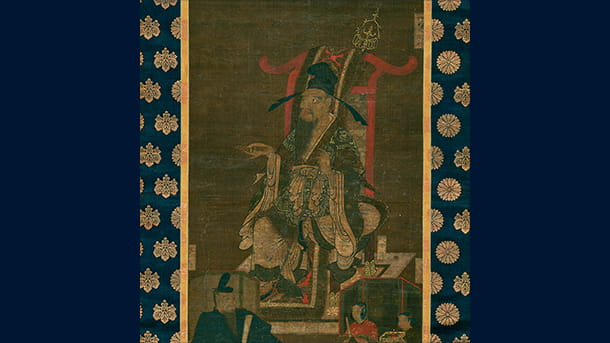“tutelary shrines”
A shrine built to guard its Buddhist temple.
“Ashikaga Takauji”
Ashikaga Takauji (1305–1358) was the first shogun of the Muromachi Shogunate (in office 1338–1358). One kanji character of Emperor Gogaigo’s real name, “Taka”, was given and named himself with that character, Takauji. During the Genko War, Takauji destroyed Rokuhara (the post of the chiefs of the Kamakura Shogunate) and paved the way for the Kenmu Restoration. Later he rebelled against Emperor Godaigo and supported Emperor Komyo. He then became Seii Taishogun (shogun) and founded the Muromachi Shogunate.
“cypress bark roofing”
A roof made by the method where cypress bark is fixed by bamboo nails.
“nagare-zukuri”
One of the traditional styles of the construction of main shrine buildings. It is characterized by a gabled roof (kirizuma-zukuri) with a curved edge, and the main entrance is on the side which runs parallel to the roof’s ridge. The front roof is longer than the other side and projects outwards.
“Chisho Daishi”
Born in Zentsuji City, Kagawa Prefecture (present-day) in 814. His father was from the Wake clan, and his mother was a niece of Kukai. At the age of 15, he went to Mt. Hiei and became a disciple of Gishin (778–833). At the age of 40, he went to Tang China in 853, learned Tendai studies and esoteric Buddhism in Mt. Tendai and Chang’an. Later, he disseminated what he had studied after returning to Japan. He stored the scriptures brought back from Tang China in the Toin Hall and took office as the first chief administrator. He then established a foundation to promote Miidera Temple to the Jimon branch main temple later by appointing Miidera Temple as a Tendai sect branch temple. He was appointed as the fifth Tendai head priest in 868 and dedicated himself to the prosperity of Buddhism for an impressive 23 years. He passed away on October 29, 891.
“Shinra Myojin”
The guardian deity of Miidera Temple. The physical object, the seated Shinra Myojin (God of Silla) Statue, is designated as a National Treasure, as it is a distinctive statue of the deity made in the Heian period (794–1185). The dignified deity appears in Kokon Chomonju, a collection of tales from the Kamakura period (1185–1333), and used to be respected by ancient people. Minamoto no Yoshimitsu became a devotee of the Shinra Myojin and named himself Shinra Saburo; therefore, the deity is also revered as the guardian deity of the Minamoto family.
“Heian period”
The Heian period lasted for approximately 400 years between the transfer of the capital by Emperor Kanmu in 794 and the foundation of the Kamakura Shogunate in 1185, and the central administration was in Heian-kyo (present-day Kyoto). Generally, the period is divided into three sections: the Early, Mid- and Late Heian periods. In other words, the period of reviving the political system based on Ritsuryo codes, the regency period and the Insei period (governed by a retired emperor), respectively. (The end of the Late Heian period was ruled by the Taira clan.) Also called the period of Heian imperial court.
“Kawachi Genji”
Kawachi Genji is the members of a family line within the Seiwa Genji clan, and they were based in Tsuboi, Ishikawa District, Kawachi Province (present-day Tsuboi, Habikino City, Osaka Prefecture). Later, they were called the Kawachi Genji because Minamoto no Yorinobu, the first ancestor of the Kawachi Genji, was assigned as a provincial governor of Kawachi Province in 1020, and three generations including himself and his descendants—Yorinobu, Yoriyoshi, and Yoshiie lived there.
It is said that Yoshimitsu (1045–1127) built Konkoin Temple in the northern section of Miidera Temple and appointed his son, Kakugi, as chief priest. Yoshimitsu’s grave is located on the hill behind the Shinra Zenshindo Shrine.


